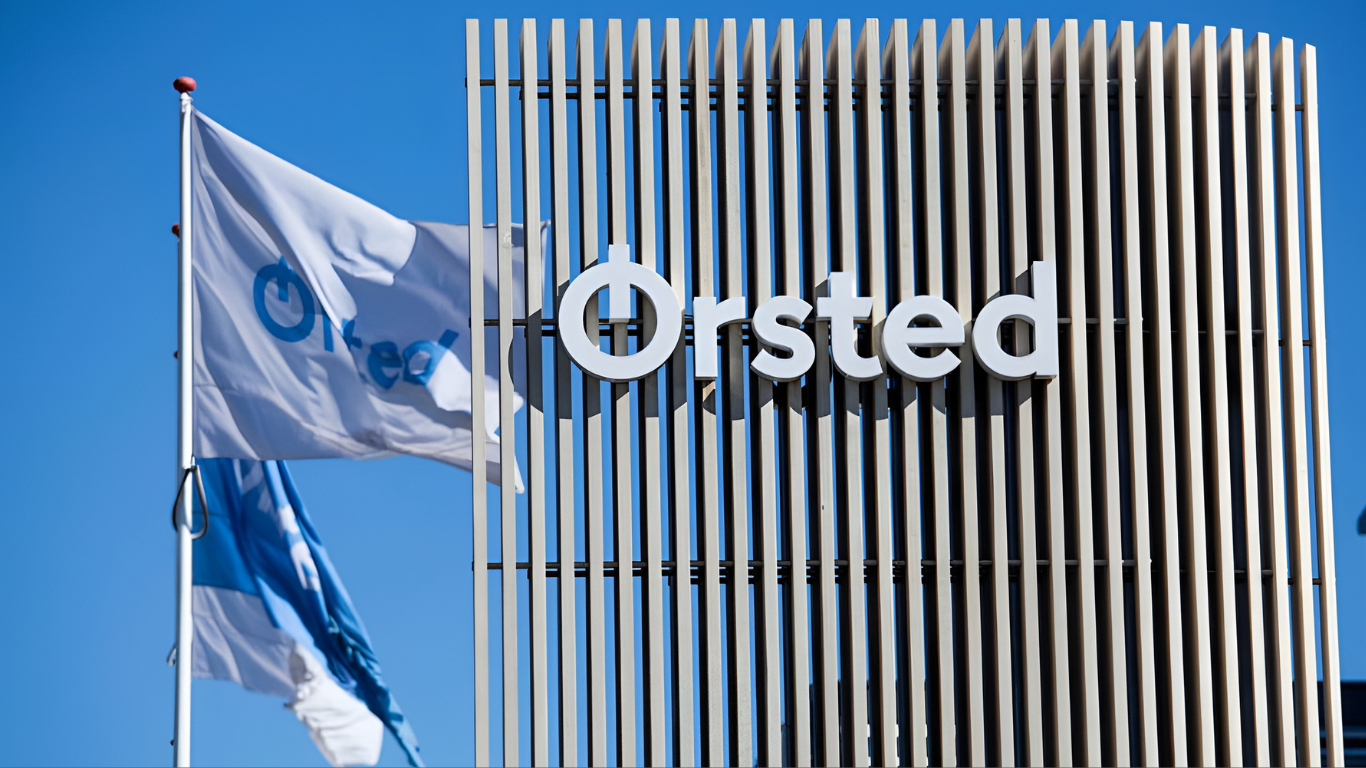Danish renewable energy leader Ørsted Hornsea 3 is reportedly preparing to sell a 50% stake in its flagship Hornsea 3 offshore wind project to US investment firm Apollo, highlighting the financial and political pressures shaping the global wind sector. Sources familiar with the negotiations said the £8.5 billion project, located 160 km off Yorkshire and 120 km off Norfolk, is expected to generate 2.9 gigawatts of clean energy — enough to power more than three million UK homes.
Ørsted Hornsea 3 Plans $5.5B Stake Sale
The decision to sell stems from mounting financial pressures. Rising construction costs, global supply-chain disruptions, and investor hesitancy in US projects have all strained Ørsted’s balance sheet. While European governments remain broadly supportive of renewable energy expansion, US policy uncertainty — particularly stemming from the Trump administration’s historical skepticism of offshore wind — has created challenges for US projects such as Sunrise Wind off the East Coast. Analysts say selling a stake in Hornsea 3 is a strategic step to secure funding for future offshore projects while managing risk.
Ørsted aims to raise at least DKr35 billion ($5.5 billion) through asset sales, including Hornsea 3, a Taiwanese offshore wind project, and its European onshore business. Additionally, the company is seeking around DKr60 billion from shareholders through a rights issue. These combined measures reflect the growing complexity of financing large-scale renewable energy projects while navigating global economic and political pressures.
Hornsea 3 Wind Farm is not just another offshore wind project; it is a symbol of the industry’s ambition. Part of the Hornsea zone, it follows Ørsted’s Hornsea 1 (1.2 GW) and Hornsea 2 (1.3 GW), which together supply electricity to 2.5 million UK homes. Hornsea 3 alone will contribute up to £8.5 billion to the local, national, and global economy through supply-chain investment and the creation of thousands of high-skilled jobs during both construction and operation. The project is central to UK energy security and supports government climate and clean energy targets, underscoring its strategic importance.
UK vs US Renewable Energy Policy Landscape
The sale also highlights the stark contrast between UK and US renewable energy policies. The UK has consistently supported offshore wind through subsidies, stable permitting frameworks, and ambitious climate targets, making it an attractive market for developers and investors. In contrast, the US has faced regulatory uncertainty and political headwinds, slowing project development and deterring some investment. Yet recent developments, such as the lifting of a US court order on Ørsted’s Revolution Wind project in Rhode Island, suggest opportunities are emerging even in the US market, particularly as private investment firms like Apollo step in to fund large-scale offshore projects.
Selling a stake in Hornsea 3 wind farm is widely seen as a strategically positive move for Ørsted. By partnering with Apollo, the company secures capital to accelerate construction, mitigate financial risk, and maintain its global leadership in offshore wind. This reflects a broader trend of renewable energy developers leveraging private investment to fund ambitious green projects, ensuring the continued expansion of clean energy capacity worldwide.
Ørsted’s Legacy in Offshore Wind
Ørsted’s history reinforces its pioneering role in offshore wind. The company built the world’s first offshore wind farm in Vindeby, Denmark, in 1991, generating 5 MW and powering 2,200 Danish homes. After more than three decades of innovation and scaling, Ørsted has developed more offshore wind farms than any other company outside China, now delivering some of the largest projects ever built.
Hornsea 3, with a 2.9 GW capacity, will make a significant contribution to UK energy security and climate goals. Managed from Ørsted’s operations and maintenance hub in Grimsby, it is the company’s third gigawatt-scale project in the Hornsea zone. The project joins Hornsea 1 and 2 and is part of an ongoing expansion that includes Hornsea 4, projected to reach up to 2.6 GW. Once operational, Hornsea 3 will provide millions of homes with renewable energy, sustain thousands of jobs, and strengthen the UK’s leadership in offshore wind.
Positive Outlook
Ørsted Hornsea 3 demonstrates the power of renewable energy finance partnership. Investors, policymakers, and industry stakeholders should watch this project closely, as it illustrates how adaptive financing, supportive policies, and global collaboration can drive the clean energy transition forward. The offshore wind project sale is not a setback—it is an opportunity to accelerate offshore wind development, strengthen energy security, and invest in a sustainable future.
